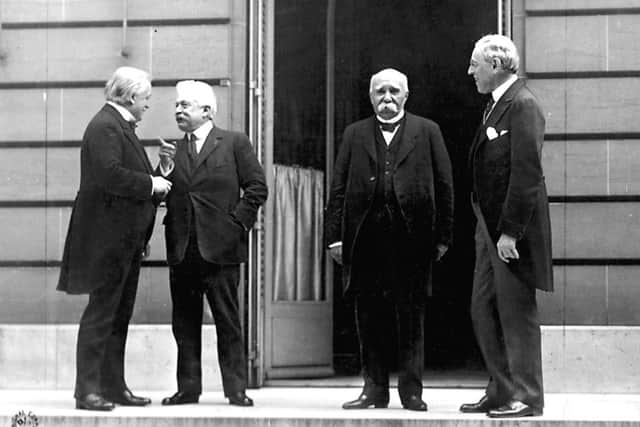How The Scotsman reported the Armistice Agreement


At 5am, 97 years ago, the Armistice Agreement was signed, signalling the end of WWI. A ceasefire was called for 11am for that day, as the German army agreed to a list of terms. Germans were given 31 days to evacuate occupied territories, except for Belgium, Alsace-Lorraine and Luxemburg which had to be immediately evacuated.
They were ordered to surrender 5,000 locomotives; 5,000 guns; 30,000 machine guns; 2,000 aeroplanes, bombers and night bombing machines.
Advertisement
Hide AdAll Allied and United States prisoners or war were to be immediate released (German Pow were to remain in captivity). Any Treaties that the German Government had made were to be abandoned.


As the sea was still an important influence during 1918, some of the navel merchants were hit the hardest. All ships were to be seized - including merchant ones - and the German ports were to be kept under Allied control.
As reported by The Scotsman, all 35 terms of the Treaty were outlined. They also carried a response from King George to the Mayor of London, which said: “On this memorable day in the world’s history, I rejoice with the great people of this city over this victory.”
Edinburgh was described as being a “scene of celebration”, with the paper reporting, “There was no outburst of unbridled demonstration. The public took the news joyously and thankfully but on the main, quietly. A peaceful gathering took place at Edinburgh Waverley, in which the Lord Provost expressed the sentiments evoked by the great occasion. The proceedings opened with the singing of God save the King. Smaller flags, as by magic, seemed to blossom forth in every direction.
“Amongst the earliest celebrants might have been observed, a young woman holding a little boy and girl in either hand, each furnished with a flag. Occasionally there was a hint of tragedy amongst the rejoicings. Amongst those who stood rejoicing on the street corners was a widow attired in black.”


They were also ordered to pay reparations fees. In 1921, this was assessed at 132 billion Marks, roughly £6.6 billion and equivalent to £284 billion in 2015.
They were given just 72 hours to accept the terms of the Treaty of Versailles, which took over six months to negotiate terms of the surrender.